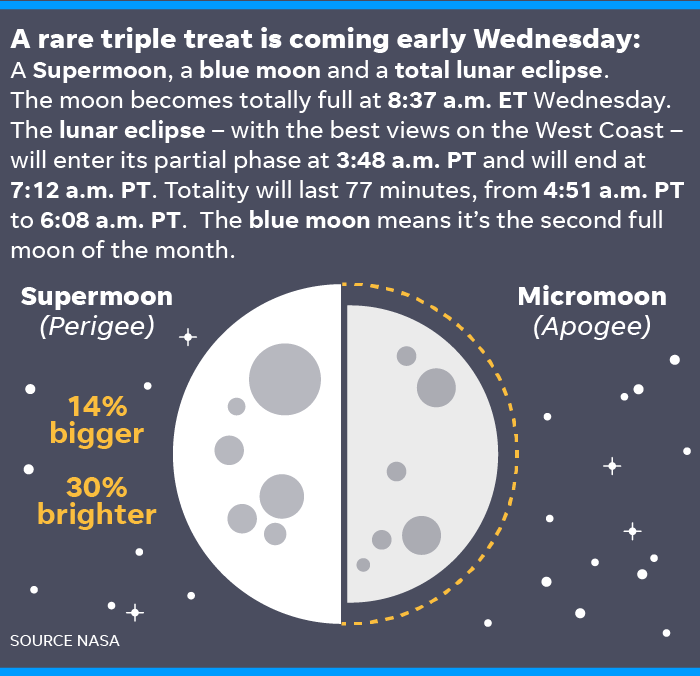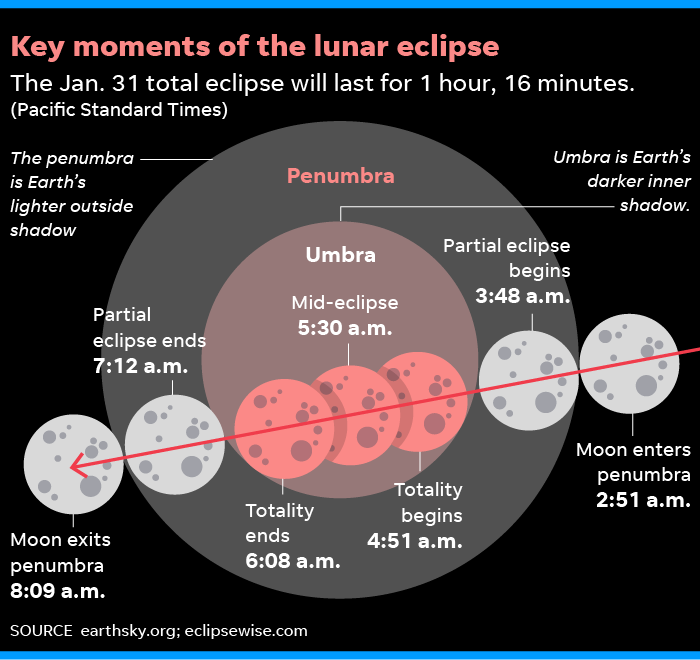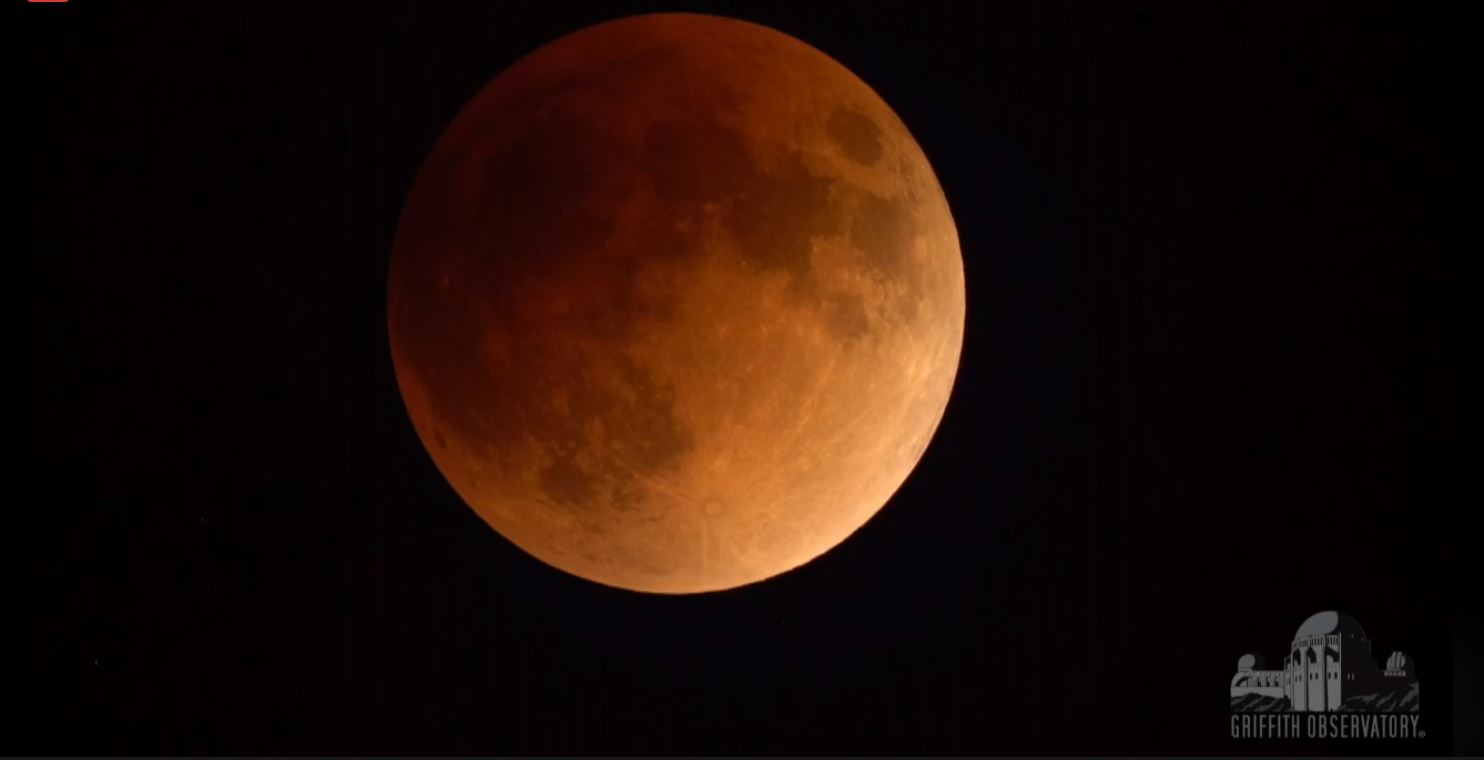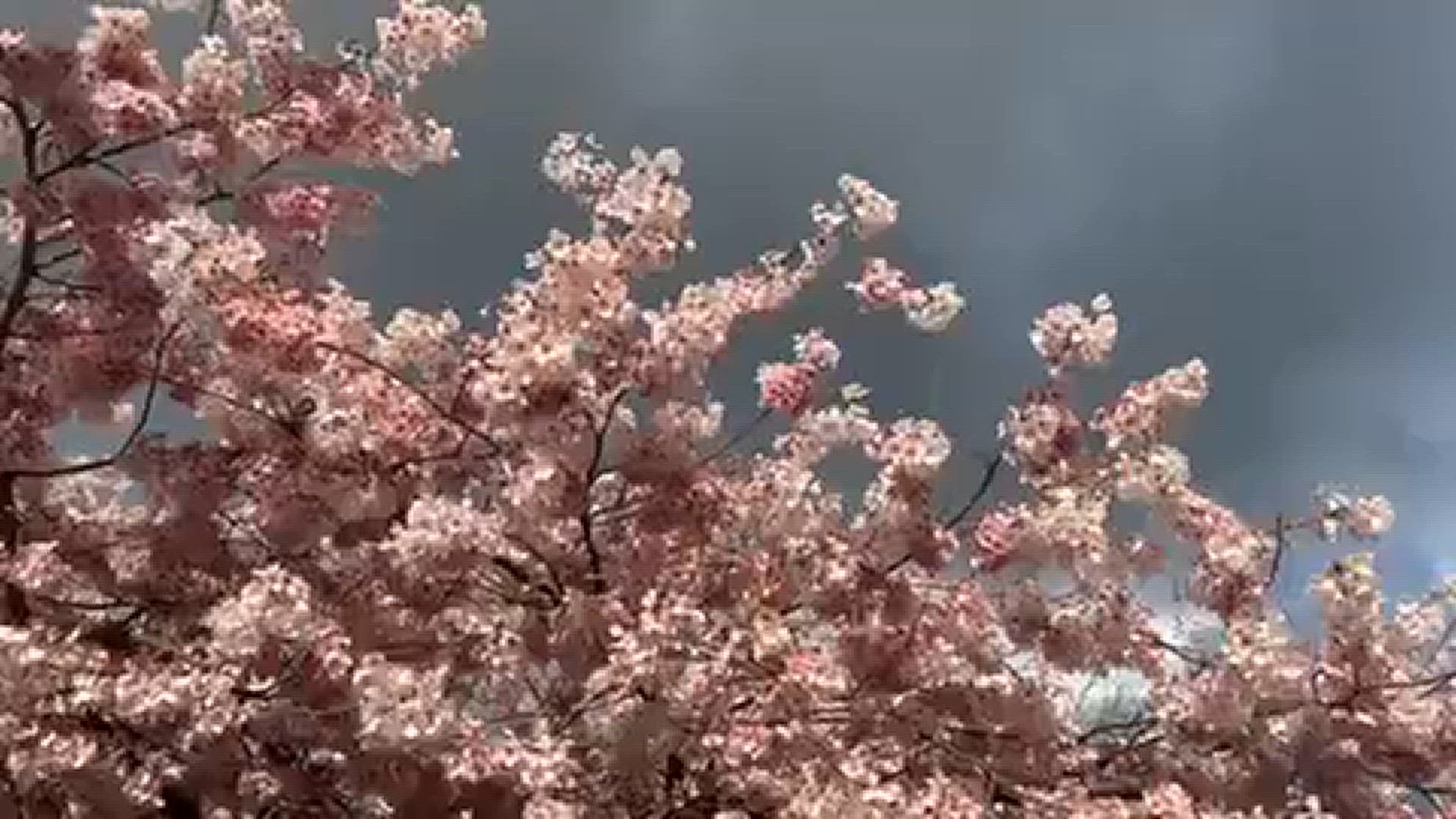The full moon early Wednesday morning will combine three rare lunar events: a supermoon, blue moon and total lunar eclipse.
If that doesn't excite you, then maybe the fact that NASA is calling it a "Super Blue Blood Moon" will.
Here are five things to know about the Super Blue Blood Moon and how you can see it:
What is happening?
Don't let its Marvel superhero name fool you — the moon won't turn blue. Blue moon refers to the second full moon in a single calendar month. January's first full moon occurred Jan. 1.
Instead, the moon will appear deep red from the total lunar eclipse, otherwise known as "blood moons." As the sun, Earth and moon line up, the Earth casts a shadow on the moon causing its red tinge.
The "super" comes into play since the full moon is at the closest point of its orbit to the Earth, or its perigee, Wednesday morning.
That makes the moon look extra close and bright — up to 14% bigger and 30% brighter than a full moon at its farthest point from Earth, according to NASA.

How rare is this?
The last time a total lunar eclipse coincided with a blue moon in the United States was in March 1866 — less than a year after the Civil War ended and more than 150 years ago.
A blue moon occurs once every two-and-a-half years, and this is the first total lunar eclipse to occur in the United State since 2015. Supermoons usually occur three or four times each year.
"These three lunar events separately are not uncommon, but it is rare for all three to occur at the same time," said AccuWeather meteorologist and astronomy blogger Brian Lada.
When is the best time to see it?
The reddish color of the moon will appear during the total lunar eclipse, which will only be visible across the western U.S. The total eclipse will last from 4:51 a.m. PT to 6:08 a.m. PT. In the Eastern Time Zone, the moon will have set before it the eclipse occurs. So, the farther west you live, the more of the eclipse you'll see.

Where is the best place to see it?
The best view of the lunar eclipse 2018 in the United States will be along the West Coast.
The best chance of seeing the Super Blue Blood Moon is in an area with a clear view of the western horizon, preferably high up.
Will I actually be able to see it?
While the moon will be full precisely at 5:37 AM PT Wednesday morning, it'll still be plenty big through the rest of the night and for the next night or two. Just as it has for billions of years, the full moon will be visible to everyone around the world, barring pesky clouds.
If you don't feel like going outside to watch the eclipse or if there's too much cloud cover where you live, NASA is hosting a live stream of the celestial event on NASA TV and at www.nasa.gov beginning at 5:30 a.m. ET.
Weather permitting, the broadcast will feature views from telescopes at NASA’s Armstrong Flight Research Center in Edwards, Calif.; Griffith Observatory in Los Angeles; and the University of Arizona’s Mount. Lemmon SkyCenter Observatory. You can also follow on Twitter at @NASAMoon.
Contributing: Doyle Rice, USA TODAY. Follow Makenzie L. Huber on Twitter: @ArgusMHuber


